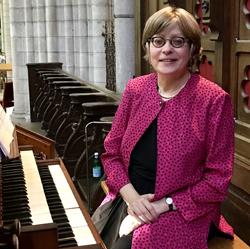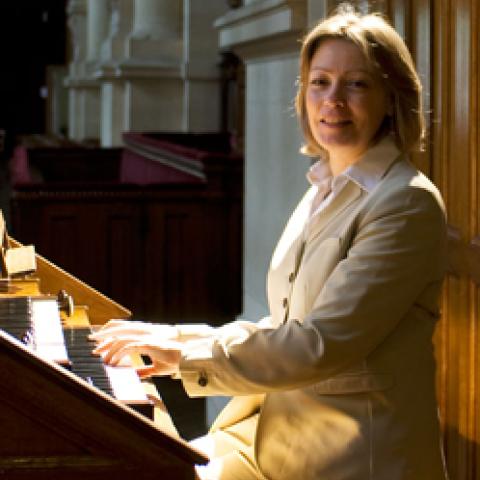
Carolyn Shuster Fournier performed the world premiere of Alice R. Lesur’s unpublished Offertoire en la mineur (Offertory in A Minor), opus 9, on the Jaquot Jean-Pierre & Sons choir organ at Soissons Cathedral, France, in a concert July 7 that commemorated the end of the First World War. Also participating in the program was soprano Magali Léger and trumpeter Nicolas Debacq. Alice Thiboust-Lesur (1881–1980), the mother of composer Daniel-Lesur (1908–2002), had studied composition with Charles Tournemire. She had composed her Offertoire in Beauvais, France, in March 1915, while she was a nurse for wounded soldiers during the war. The performance also included works by Jean-Charles Gandrille, Francis Poulenc, William Bolcom, and Bernard Wayne Sanders. For information: http://shusterfournier.com.
Carolyn Shuster Fournier at the choir organ of Soissons Cathedral, France



